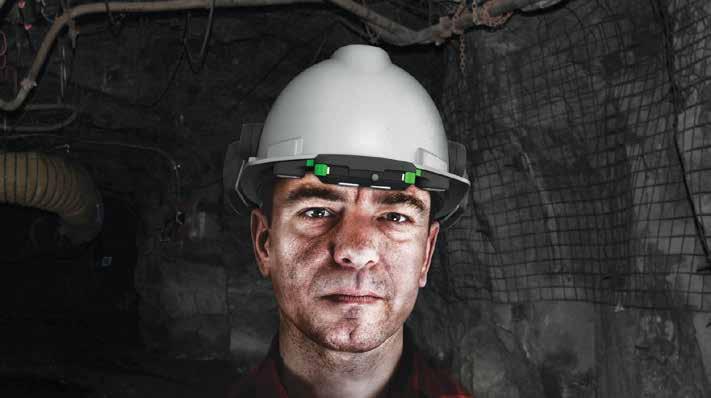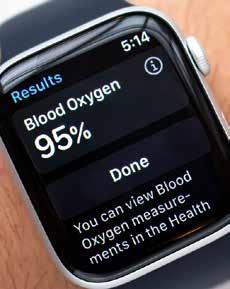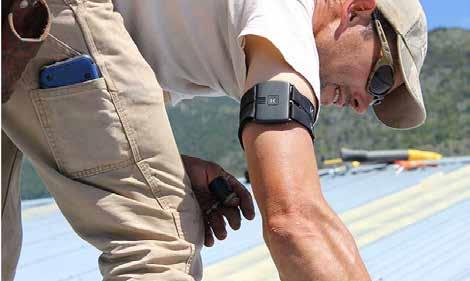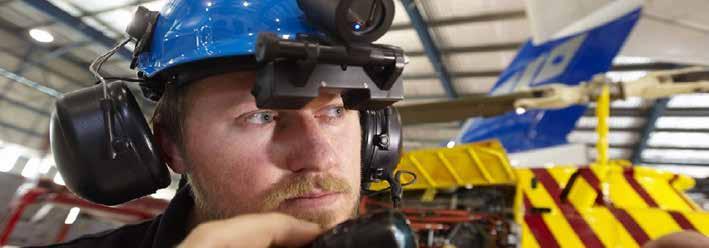
4 minute read
Wearables Revolutionalise Mine Safety
Mine Health and Safety regulations obligate mine operators to adopt measures that mitigate the risks their employees are exposed to at the coal face of operations. That’s why they should continuously adopt tools that can help them enhance safety. Based on incredible abilities they display, wearables have staked their claim as a reliable part of health and safety solutions.
Currently, mining companies are enjoying a spell of high commodity prices (long may it continue). This is despite high energy prices occasioned by the War in Ukraine and the lingering effects of the COVID-19 pandemic.
Advertisement
Market Trends and Challenges
As you would have thought, mine operators are ramping up production to make the most of the favourable market conditions. According to project updates, Mining Business Africa regularly gathers, some are even moving their activities to deep-level areas, in some cases ultra-deep, as well as remote conditions, to access ore deposits.
Inescapably, this increased activity in extreme environments exposes workers to escalated health and safety risks. For instance, amongst others, there is a likelihood of an increase in driving accidents. This is a fact that Cliff de Wit, Chief Technology Officer at Netstar (a subsidiary of Altron) highlights in this article, “How Advanced Technology Transforming
Generally, accidents result in financial losses of millions of dollars when downtime to production and compensation claims are factored in. Accordingly, mine operators must explore tools that can help them improve workplace health and safety.
Role of Wearable Devices
Expediently, wearable devices (or interchangeably as wearables) have emerged as one of the convenient tools that mine operators can utilise to enhance safety and improve productivity. Largely, this is thanks to the Internet of Things (IoT) and smart technology, which have opened up opportunities in wear technology. Until recently, the marvels of this innovation were regarded as the stuff of science fiction.
What is more, as a tool, the portability of wearables is very convenient to the end-user. Worn on the user’s body, popular wearable devices include smart watches, smart glasses, smart helmets, fitness trackers, smart clothing, bands, wearable cameras, and RFID tags, just to cite a few. Basically, wearables come in different shapes and sizes for the end-user’s convenience. (It must be noted that the scope of this is widening).

Diverse Features and Applications
More importantly, it is their diverse features that make wearables fit for purpose. Usually, they are equipped with diverse features, specific to the application they are designed to serve. These include but are not limited to the following: GPS location, hazardous gas sensors, no-motion detection, and a panic button. These provisions improve communications through notifications and alarms.
Due to their unique features, wearables are employed to reduce the risk of accidents and injuries (workforce safety and injury prevention), in addition to improving the efficiency of operations. Handily, the critical data generated from the devices informs decisions to be taken.

Enhancing Workforce Safety and Injury Prevention
From a workforce safety and injury prevention viewpoint, wearable devices allow intelligent perception of people, vehicles, objects, and other risks. For instance, driver-fatigue monitoring wearables devices provide alerts that warn of fatigue before it becomes a safety risk. In this way, it protects drivers and other road users. In case of emergencies, workers are removed from hazardous unforeseen. Moreover, it can be used to assess the health and safety risks faced. Then, based on that, companies can institute suitable training programmes for their employees, as well as adopt other safety measures.
Ultimately, what are the gains from a health and safety perspective? Fewer events, lower investigations, and claims costs. A mine can’t ask for a better outcome to improve its health and safety initiative.
Improving Productivity Through Wearables
With wearables, efficiency can be achieved in two ways: real-time monitoring and inspection of critical equipment, as well as resource scheduling.
• Real-time Monitoring and Inspection
Wearables can be used in sound equipment maintenance. They can be used to inspect signs of failure in equipment to minimise downtime (increase availability for processes).
To appreciate the value of wearables in sound equipment maintenance, take this example: imagine dispatching a team of technicians to attend to an issue at a remote mine. This task would entail huge expenses; conducting inspection and repairing equipment would consume more time. While this task is being taken, there would be downtime to equipment.
Alternatively, the use of smart glasses or smart helmets would allow for reduced time and cost incurred in inspecting and repairing equipment. With wireless connectivity, a field engineer can receive expert guidance from the control centre in real-time.

• Resource Tracking
Wearable technology, like RFID tags into personalised hard hats, can be employed to efficiently track the workforce during mine operations. For instance, assessing the time a worker spends on an assigned task. Additionally, the data can be used to map out ways of improving productivity through effective resource scheduling. RFID tags into personalised hard hats for each worker, providing mine supervisors at a monitoring centre with real-time information about their location and the state of the mine.
The‘Next big thing‘
One may ask: Have we seen the peak penetration of wearables in the mining sector? Certainly not. A report compiled by GlobalData, Wearable Tech in Mining –Thematic Research, touts wearables as the ‘next big thing’ in mining. Indisputably, two factors substantiate this observation: recent developments in R&D, coupled with the increasing need for mining companies to improve safety. This suggests there is exponential growth in market demand. Already, there are indications that, with advances in research and development, the range of features of wearables is widening.
Evidently, wearables are revolutionising safety in the mining sector, and the revolution is only beginning. It seems, the world hasn’t seen anything yet.
With mining companies’ ultimate goal being zero harm, it makes sense for the industry to embrace smart technologies to improve mineworker safety by making it easier to identify and mitigate different risks.


By Eulene Jones, Executive Head of Mining, Oil and Gas at Vodacom Business









